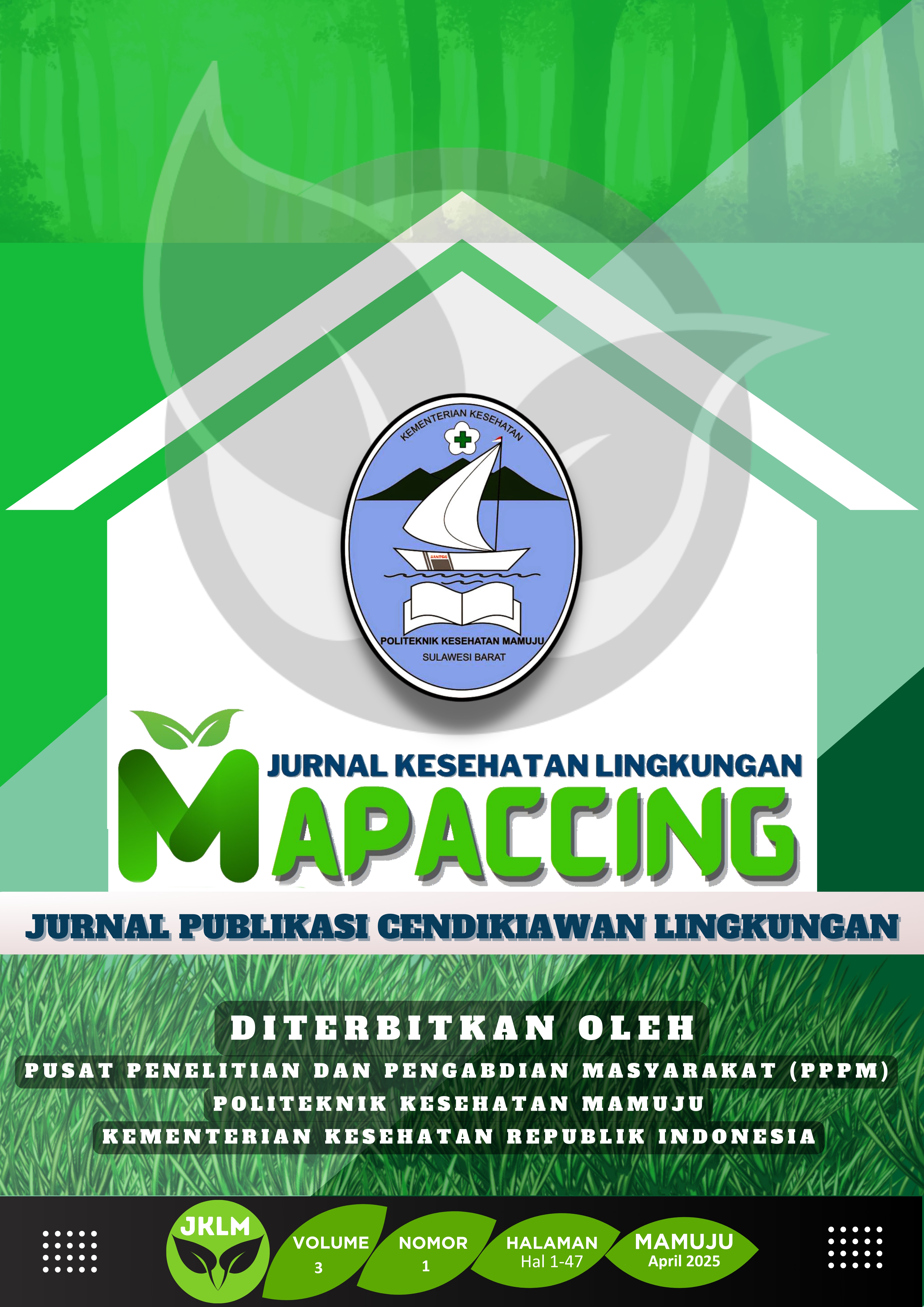Abstract
According to data from the World Health Organization (WHO), exposure to noise in the workplace is one of the most common risk factors, second only to the risk of workplace accidents. Workplace noise exposure has been found to contribute to 22% of health problems in the work environment. This study aims to determine the relationship between noise levels and blood pressure in the workplace. This is a descriptive study with a survey method that aims to explore the relationship between noise and the blood pressure of employees at PT. Rekind Daya Mamuju. The data collection techniques used were blood pressure measurements and noise measurements. This research was conducted at PT. Rekind Daya Mamuju, Dusun Talaba, Desa Belang-Belang, Kec. Kalukku, Kab. Mamuju, West Sulawesi Province. The results of the study showed that the average noise levels measured at PT. Rekind Daya Mamuju were 93 dBA in the boiler unit, 86 dBA in the WTP unit, 89 dBA in the turbine, 63 dBA in the coal yard unit, and 63 dBA in the workshop, with a total of 18 employees. Based on blood pressure measurements before work, the average blood pressure was 120 mmHg/80 mmHg, and after work, the average blood pressure was 120 mmHg/90 mmHg. Based on the research results, the significance values were 1.000 and 0.637, where the p-value > 0.05. This indicates that there is no significant relationship between noise and blood pressure, both before and after work. The recommendation from this study is that industries should mandate the use of appropriate personal protective equipment (PPE), such as earmuffs or earplugs, for workers in areas with high noise levels. Additionally, regular noise quality measurements and monitoring should be conducted to ensure that noise intensity remains within safe limits

This work is licensed under a Creative Commons Attribution-ShareAlike 4.0 International License.
Copyright (c) 2025 Belolangi Belolangi, Abdul Ganing, Ridhayani Adiningsih, Zrimurti Mappau


